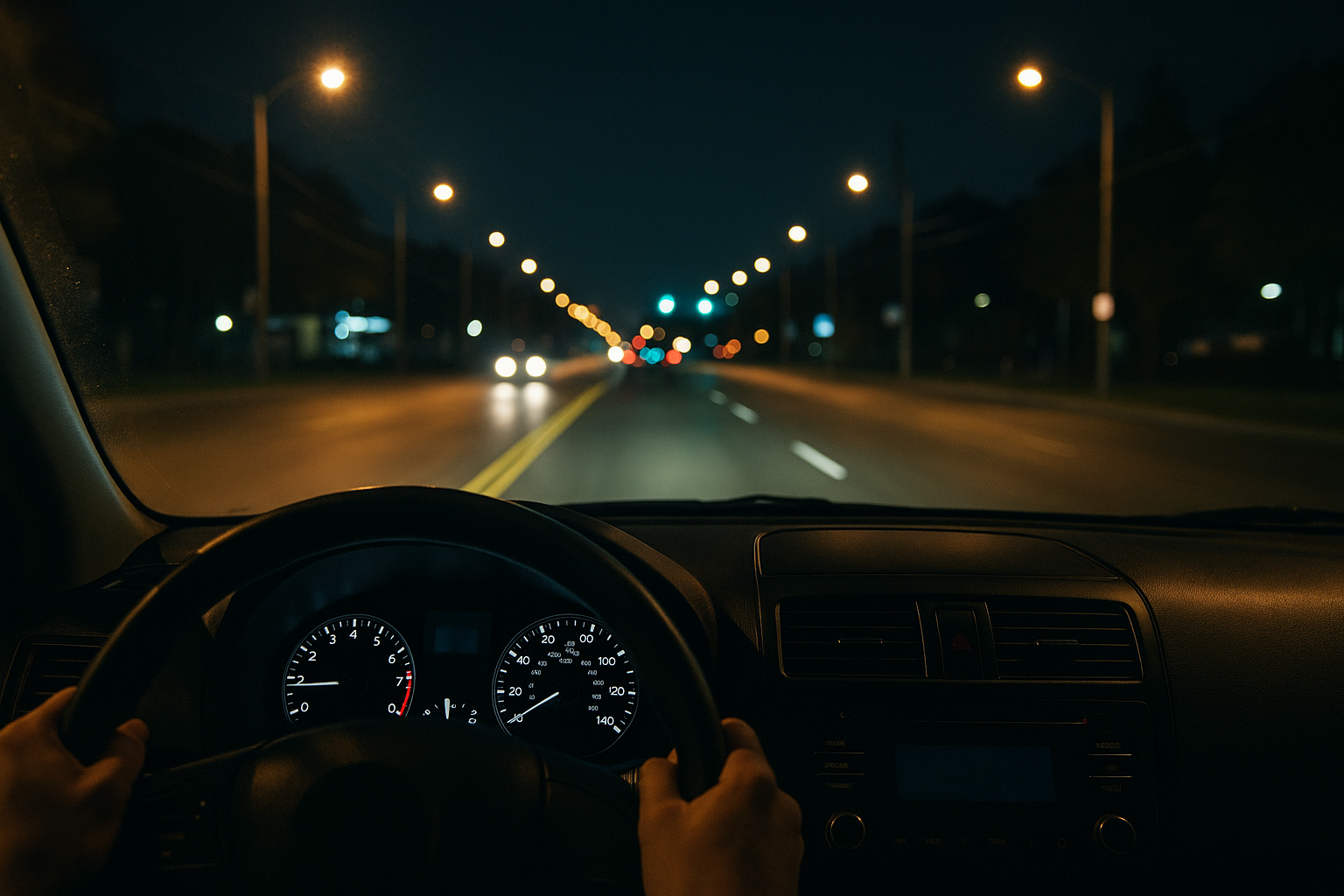Hook: Driving after dark increases risks from reduced visibility, oncoming headlights, and driver fatigue. Following this night driving safety checklist will help you manage your vehicle’s lighting, minimize glare, and stay alert so you can navigate the roads with confidence.
- Essential lighting checks before you roll
- Techniques for glare reduction in your car
- Strategies to combat nighttime fatigue
1. Inspect Your Headlights & Taillights
Clean, properly aimed headlights are your first line of defense. Check both low and high beams by turning them on in a dark area and confirming they illuminate the road evenly. Replace any bulbs that show dimming or color shifts. Don’t forget taillights, brake lights, and turn signals—functional rear lighting ensures vehicles behind you can anticipate your moves.
2. Aim & Adjust for Optimal Beam Pattern
Misaligned headlights can blind oncoming drivers or fail to light your path. Park 25 feet from a wall, turn on low beams, and mark the center of each beam. Adjust the vertical and horizontal aim using the screws on your headlight housing until patterns line up with vehicle specifications in your owner’s manual.
3. Use Night-Specific Glasses & Windshield Treatments
Anti-reflective night-driving glasses reduce interior glare from dashboard lights and passing headlights. Consider applying a hydrophobic treatment to your windshield to repel water droplets and improve clarity in rain. A clean, streak-free windshield is critical—use a quality glass cleaner and microfiber towel before every nighttime drive.
4. Minimize Interior Reflections & Dashboard Brightness
Interior lights and bright gauges can create distracting reflections on your windshield. Dim or turn off unnecessary cabin lights, and set your instrument panel to its lowest comfortable brightness. Cover reflective surfaces on your dash with a non-reflective mat to further reduce glare.
5. Combat Glare from Oncoming Traffic
Glare from high beams can temporarily blind you. Look toward the right edge of the road and use lane markings as a guide. Avoid staring directly at headlights. If vehicles don’t dip their beams, briefly flash your high beams once to remind them—then return to low beams immediately.
6. Keep Mirrors & Exterior Glass Clean
Dirty side mirrors and windows amplify glare and scatter light. Clean all exterior glass surfaces regularly, including side mirrors. Tilt side mirrors downward slightly at night to reduce reflections from vehicles behind you, and use your rearview mirror’s “night” or “auto-dim” setting if available.
7. Plan Breaks to Fight Fatigue
Driving at night can accelerate fatigue. Schedule a 15-minute break every two hours or 100 miles. Use this time to stretch, walk around, and hydrate. Even a brief rest can reset your alertness and reduce the risk of microsleeps behind the wheel.
8. Use Caffeine & Healthy Snacks Strategically
A cup of coffee or tea can enhance alertness for 2–3 hours. Combine caffeine with a light, protein-rich snack—nuts or cheese cubes—to avoid sugar crashes. Avoid heavy meals before driving, as digestion can cause drowsiness.
9. Adjust Your Driving Style
Reduce speed to compensate for limited visibility. Increase following distance to at least four seconds at night. In rural areas, watch for wildlife near illuminated patches in the road, and be prepared to brake smoothly.
10. Leverage Vehicle Safety Features
Modern cars offer features like adaptive headlights, automatic high-beam control, and night-vision assist. Engage these systems if available, but don’t rely solely on them—stay vigilant and maintain manual control over lighting switches.
Common Pitfalls to Avoid
- Relying on high beams continuously: High beams can blind other drivers—use them sparingly and switch back promptly.
- Ignoring eye strain: If your eyes feel dry or tired, stop and rest—eye drops and brief naps can help.
- Overdriving headlights: Don’t drive faster than your headlights illuminate—adjust speed so you can stop within visible range.
FAQs
- Q1: How often should I replace my headlight bulbs?
- A1: Replace halogen bulbs every 2–3 years or when you notice dimming; LED and HID units can last longer but still require periodic checks.
- Q2: Are tinted windshields safe at night?
- A2: Dark tints reduce glare but can also impede visibility. Ensure your tint complies with local regulations and doesn’t hinder your night vision.
- Q3: Can I use high beams on rural roads?
- A3: Yes, but be ready to switch to low beams when you detect oncoming vehicles or follow another car to prevent glare.
Conclusion & Next Steps
Incorporating these night driving safety measures—proper lighting checks, glare reduction car techniques, and fatigue management—transforms after-dark driving into a safer, more comfortable experience. Perform this checklist before your next night trip, and you’ll navigate darkness with confidence and control.
